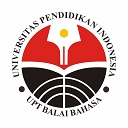Utilizing Japanese Community Engagement: Understanding Malaysian Traditional Music Therapy for Children with Special Needs
Abstract
Keywords
Full Text:
PDFReferences
Aktan, Z. D., & Yarar, O. (2015). Assessment of Music Therapy as a Therapeutic Intervention Method in Children. Journal of Medical and Bioengineering Vol, 4(6).
Berger, D. S. (2002). Music therapy, sensory integration, and the autistic child. Jessica Kingsley Publishers.
Bicard, S. C., & Heward, W. L. (2013). Educational equality for students with disabilities. Multicultural education: Issues and perspectives (8th ed., pp. 245–268). Hoboken, NJ: Wiley.
Brugha, T. S., McManus, S., Bankart, J., Scott, F., Purdon, S., Smith, J., Bebbington, P., Jenkins, R., & Meltzer, H. (2011). Epidemiology of autism spectrum disorders in adults in the community in England. Archives of General Psychiatry, 68(5), 459-465.
Buescher, A. V., Cidav, Z., Knapp, M., & Mandell, D. S. (2014). Costs of autism spectrum disorders in the United Kingdom and the United States. JAMA pediatrics, 168(8), 721-728.
Campbell, P. S., & Scott-Kassner, C. (2002). Music in Childhood: From Preschool to the Elementary Grades (2 e éd.).
Chiengchana, N., & Trakarnrung, S. (2014). The effect of Kodály-based music experiences on joint attention in children with autism spectrum disorders. Asian Biomedicine, 8(4), 547-555.
Cheong-Clinch, C. (2009). Music for engaging young people in education. Youth Studies Australia, 28(2), 50.
Centers for Disease Control and Prevention. (2015) CDC 24/7: Saving Lives. Protecting People.
Duffy, B., & Fuller, R. (2000). Role of music therapy in social skills development in children with moderate intellectual disability. Journal of Applied Research in Intellectual Disabilities, 13(2), 77-89.
Duggan, D. (1978). Goals and methods in dance therapy with severely multiply-handicapped children. American Journal of Dance Therapy, 2(1), 31-34.
Fraser. (2013). Autism Resorurce Directory. Richfield, MN: Fraser.
Flum, H., & Kaplan, A. (2006). Exploratory orientation as an educational goal. Educational Psychologist, 41(2), 99-110.
Fillingham, C. L. (2007). Friendship and group work. In Music therapy with adults with learning disabilities (pp. 83-96). Routledge.
Gabriels, R. L., Agnew, J. A., Miller, L. J., Gralla, J., Pan, Z., Goldson, E., Ledbetter, J.C., P. Dinkins, J.P., & Hooks, E. (2008). Is there a relationship between restricted, repetitive, stereotyped behaviors and interests and abnormal sensory response in children with autism spectrum disorders? Research in Autism Spectrum Disorders, 2(4), 660-670.
Hall, S. A. (2009). The social inclusion of people with disabilities: a qualitative meta-analysis. Journal of Ethnographic & Qualitative Research, 3(3).
Harrison, J., & Hare, D. J. (2004). Brief report: Assessment of sensory abnormalities in people with autistic spectrum disorders. Journal of Autism and Developmental Disorders, 34(6), 727-730.
Jevtic, A. (2015). 11 Countries with the Highest Rates of Autism in the World. Insider Monkey, July, 1.
Kawamura, Y., Takahashi, O., & Ishii, T. (2008). Reevaluating the incidence of pervasive developmental disorders: impact of elevated rates of detection through implementation of an integrated system of screening in Toyota, Japan. Psychiatry and Clinical Neurosciences, 62(2), 152-159.
Kennelly, J. (2000). The specialist role of the music therapist in developmental programmes for hospitalised children. Journal of Pediatric Health Care, 14(20), pp. 56-59.
Kim, J., Wigram, T., & Gold, C. (2008). The effects of improvisational music therapy on joint attention behaviors in autistic children: a randomized controlled study. Journal of Autism and Developmental Disorders, 38(9), 1758.
Lau, W. C. M. (2005). Can children’s social skills be enhanced through singing games in music lesson?.
LaGasse, A. B. (2014). Effects of a music therapy group intervention on enhancing social skills in children with autism. Journal of Music Therapy, 51(3), 250-275.
Leekam, S. R., Nieto, C., Libby, S. J., Wing, L., & Gould, J. (2007). Describing the sensory abnormalities of children and adults with autism. Journal of Autism and Developmental Disorders, 37(5), 894-910.
Loftin, R. L., Odom, S. L., & Lantz, J. F. (2008). Social interaction and repetitive motor behaviors. Journal of Autism and Developmental Disorders, 38(6), 1124-1135.
Nicholls, T. (2002). Group Music Therapy with Severely Learning Disabled Adolescents. Music Therapy and Group Work: Sound Company, 231.
Pavlicevic, M., O’Neil, N., Powell, H., Jones, O., & Sampathianaki, E. (2014). Making music, making friends: Long-term music therapy with young adults with severe learning disabilities. Journal of Intellectual Disabilities, 18(1), 5-19.
Quiroga Murcia, C., Kreutz, G., Clift, S., & Bongard, S. (2010). Shall we dance? An exploration of the perceived benefits of dancing on well-being. Arts & Health, 2(2), 149-163.
Singh, M. (2010). Education of children with special needs. New Delhi: Kanishka Publishers.
Schwartz, E. (2008). Music, therapy and early childhood: a developmental approach. Gilsum, NH: Barcelona Publishers.
St-John, A. (2004). An investigation of the relationship between flow experience and the role of scaffolding in a Kindermusik classroom. Columbia University.
Talwar, N., Crawford, M. J., Maratos, A., Nur, U., McDermott, O. R. I. I., & Procter, S. (2006). Music therapy for in-patients with schizophrenia: exploratory randomised controlled trial. The British Journal of Psychiatry, 189(5), 405-409.
Vygotsky, L. (1978). Interaction between learning and development. Readings on the Development of Children, 23(3), 34-41.
DOI: https://doi.org/10.17509/japanedu.v8i2.63164
Refbacks
- There are currently no refbacks.
Copyright (c) 2023 JAPANEDU: Jurnal Pendidikan dan Pengajaran Bahasa Jepang

This work is licensed under a Creative Commons Attribution-ShareAlike 4.0 International License.
 Published by:
Published by: Department of Japanese Language Education, Faculty of Language and Literature Education
Universitas Pendidikan Indonesia
 Online ISSN: Online ISSN:2528-5548 |

JAPANEDU: Jurnal Pendidikan dan Pengajaran Bahasa Jepang (e-ISSN:2528-5548) lisenced under a Creative Commons Attribution-ShareAlike 4.0 Internasional (CC BY-SA 4.0)


